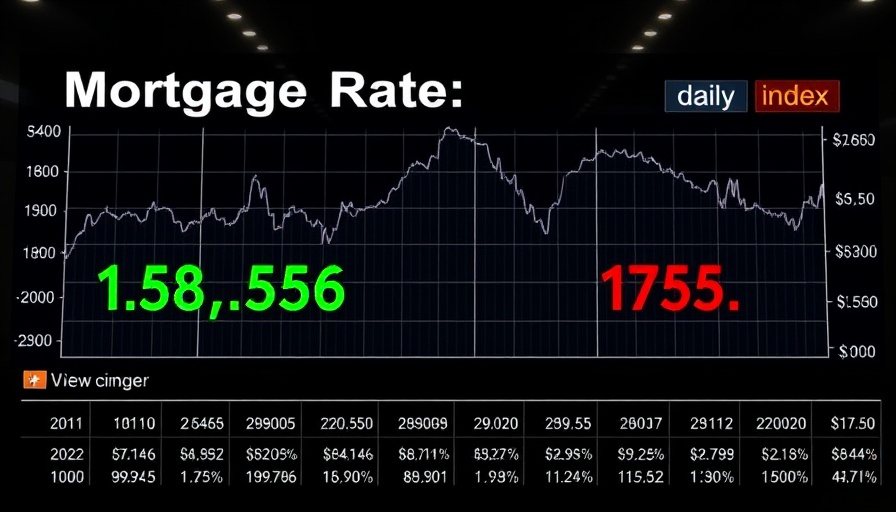
The Dynamics of Mortgage Rates in a Volatile Market
Mortgage rates typically align closely with fluctuations in the bond market, but the ongoing volatility can create noticeable discrepancies from day to day. To illustrate this, one could imagine mortgage rates as akin to a restaurant adjusting its prices based on the cost of ingredients. If the prices of key ingredients change significantly early in the day, a restaurant may adjust its menu prices accordingly. However, if such changes occur late in the day, it may opt to leave prices steady. This same principle applies to mortgage rates and their hesitant responses to bond market movements.
Bonds and Their Influence on Mortgage Rates
Over the last couple of days, a notable trend has emerged. As bonds showed signs of improvement one afternoon, mortgage rates naturally seemed inclined to decrease. Yet, due to the timing of these changes, lenders often refrain from adjusting rates immediately—putting them on a delayed response cycle. Consequently, even as the following day brought a setback in bond performance, lenders had retained their previous rates, creating a momentary lull in pricing adjustments. Currently, the average rate for a 30-year fixed mortgage rests at 6.37%, showing a curious stability despite the recent fluctuations in the bond market.
Significance of Today’s Rates for Buyers and Homeowners
This current stability should bring a measure of relief to both potential buyers and current homeowners. With many individuals still feeling the pressure of affordability challenges in the housing market, understanding these dynamics becomes essential. While stable mortgage rates could spur tentative buyer interest in the market, the significance lies in the number of potential borrowers who might qualify for loans in a currently constrained financial landscape. Furthermore, fluctuating rates can equally pose challenges for homeowners looking to refinance loans taken at higher past rates.
Anticipated Trends in Mortgage Pricing
As we analyze recent trends, potential developments in the mortgage market are worth monitoring. Financial analysts predict that gradual adjustments might be made as lenders grow more responsive to bond market changes. The expectation is that rates could either stabilize further or adjust based on Federal Reserve actions concerning interest rates, which historically have a profound influence on prepared mortgage products. A closer look at upcoming inflation data, economic indicators, and other market shifts may give insight into how the market might behave in the upcoming weeks.
Equipping Yourself with Mortgage Tools
For buyers and homeowners, understanding the mortgage landscape becomes vital. Utilizing available resources such as mortgage calculators and comparison tools available via financial apps not only aids in tracking current rates but also helps strategize decisions around home financing effectively. Adopting a proactive stance can provide would-be homeowners with the intelligence they need to enter the market at the right time.
A Call for Informed Decision-Making
While mortgage rates remain somewhat flat, the potential for shifts due to bond market volatility is ever-present. Buyers and homeowners must stay informed and agile, ready to seize opportunities as they arise. Whether navigating the complexities of obtaining a mortgage or weighing refinancing options, a strategic understanding of current mortgage trends and market sentiments is invaluable in today’s economic climate.
Ultimately, remaining engaged with market updates and ensuring proper utilization of financial resources will empower consumers to make informed decisions that align with their financial goals.
 Add Row
Add Row  Add
Add 




Write A Comment